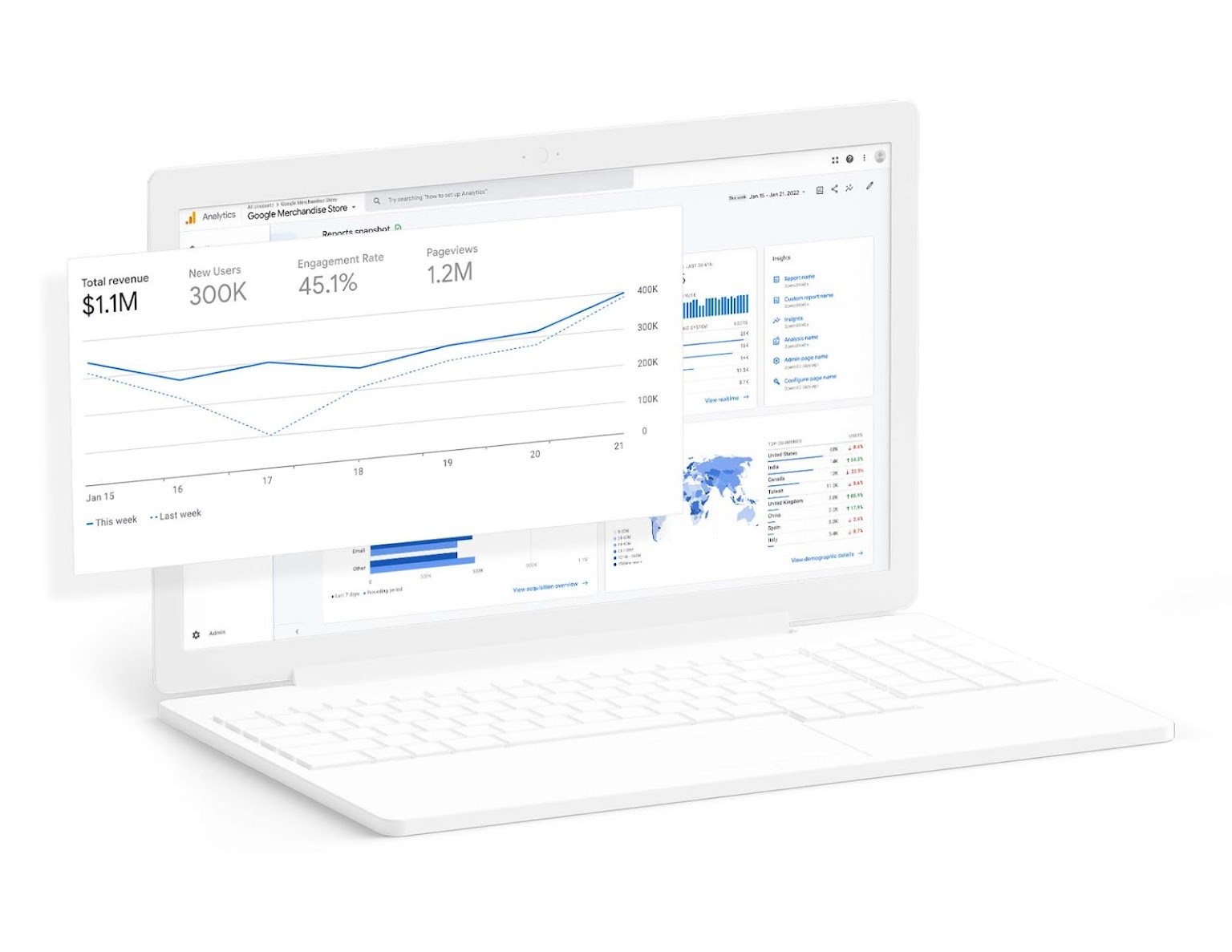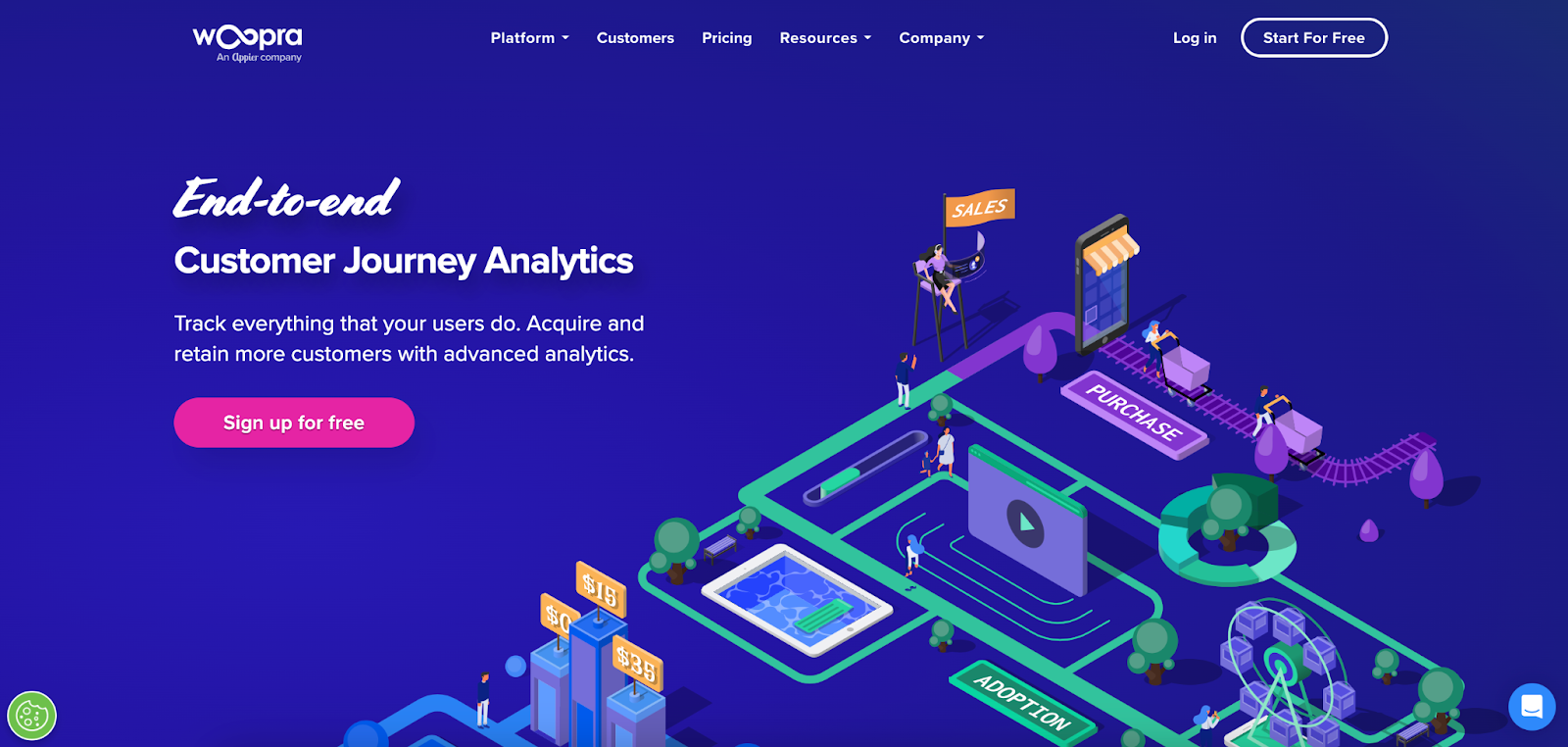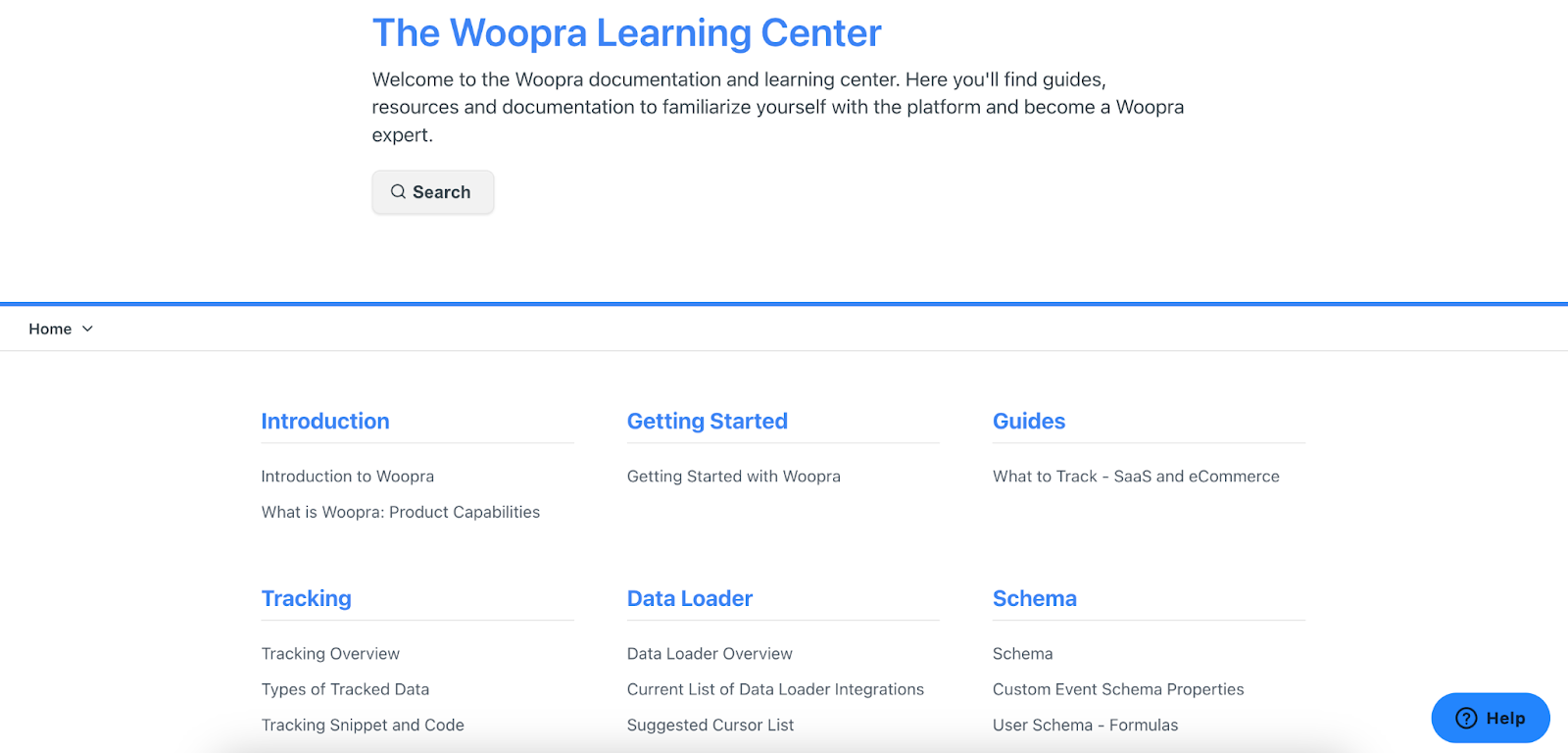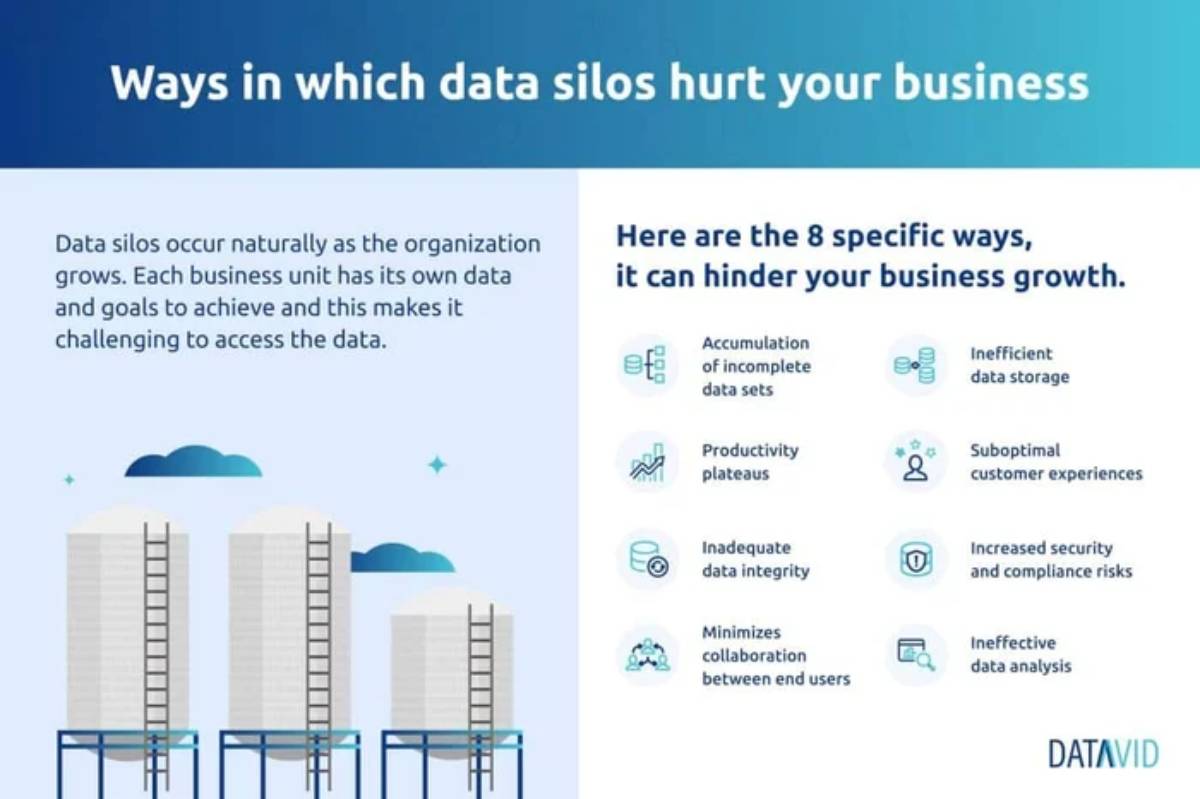Marketing is not a precise science. Though there are best practices and guidelines marketers can follow, each brand must create and adapt its unique marketing strategy based on its own experience. This is where marketing analytics comes in.
As a company prepares to launch a new marketing campaign, it should be engaging in different types of marketing analytics (i.e., descriptive analytics, predictive analytics, and prescriptive analytics) to learn from past efforts, gauge future outcomes, and optimize this new initiative for the best results.

Source: Innovu
Yet, not every company does it, or does it well, and that can prove to be a pitfall in a company’s marketing approach.
Here are four common barriers to marketing analytics that companies typically face and how to overcome them with Woopra.
Barrier #1: It Seems Too Difficult to Use
Marketing analytics software is supposed to help marketers go through volumes of data and distill actionable insights. It is supposed to make the job of marketers, many of whom do not have a background in data science, easier when analyzing marketing data.
Unfortunately, some marketing analytics tools prove too difficult to set up and navigate that companies give up on them while reading the instruction manuals.
Just picture something like this when trying to understand a marketing metric.
 Source: Maptive
Source: Maptive
Whether that is a UX problem or a UI issue, these software tools fail to make the lives of their users easier.
They are proving to be another source of stress when they should have intuitive features and designs that make it very easy and natural for marketers to learn to use them.
After all, the point of adopting a marketing analytics platform is to better make sense of the big data collected without hours of manual labor so that marketers can focus their attention on existing and potential customers and their customer experience instead.
Solution: Adopt a Marketing Analytics Tool That’s Easy to Use
While much easier said than done, our advice is that you look around for a marketing analytics tool that is easy to use for your company and your objectives.
The emphasis here is on something that is easy to use for you, which means you and your team need to understand what metrics matter to you, what marketing success looks like for your market, and answers to other high-level questions.
We have compiled a list of the best marketing analytics tools, including well-known ones like Google Analytics and Adobe Analytics, that you can check out right away.
 Source: Google Marketing Platform
Source: Google Marketing Platform
If you are interested in our Woopra solution, feel free to take advantage of our free trial.

Woopra’s analytics solution covers the main types of analytics any company may need, such as customer journey and product analytics, and integrates with many of the most used marketing and sales tools and platforms seamlessly. With a user-friendly interface and bright, vibrant colors to boot, Woopra was developed with the user in mind to help marketers fully understand customer behavior and easily make the best marketing decisions.
Some specific types of marketing you can analyze with Woopra include:
- Email marketing
- Interactive marketing
- Mobile marketing
- Content marketing
- Direct marketing
- Green marketing
- Google Ad campaign performance
- Marketing automation
And with detailed customer segmentation, marketers can track customer engagement across a wide variety of demographics.
Barrer #2: No In-House Personnel to Manage It
The lack of a designated person or team to manage marketing analytics software can render it worthless if no one actively uses it for business intelligence purposes.
If your company is a small start-up, the problem might be that there is no marketing team. Every person that makes up your founding team is pulling double duty, and no one has the bandwidth to master a new software — no matter how helpful it may prove to be.
If your company is a large corporation, you may have the opposite problem: appointing one person to be in charge of marketing analytics. With a large team made up of strategists and analysts, market research experts, and data scientists, who should take ownership of the new tool?
Solution: Delegate Ownership & Empower Users
The solution to this barrier is simple: delegate. Identify one or two people whose current work scopes are most related to analytics, and make them the owners of this new marketing analytics tool.
It can be daunting for the designated owner(s) to learn how to navigate this new tool and try to generate a return on investment (ROI) immediately. Instead of adding to the pressure, empower them with the resources available to them.
With Woopra, for instance, we have the Woopra Learning Center for users to get answers to frequently asked questions and familiarize themselves with the platform.

We even feature a customer service chat on our website through which you can correspond with our support team who will walk you through any issues you may have.
Barrier #3: No Executive Buy-In or Data-Driven Culture
The biggest barrier to marketing analytics can come from above, at the management level where key decisions are made and examples are set.
According to a Gartner study, marketing analytics is only influencing 53% of marketing decisions that companies make. That means almost half of all marketing decisions are made without data backing them up — without marking analytics influence.
Without executive buy-in, marketers will have a hard time acquiring the budget to purchase a marketing analytics solution.
Even with a budget, the marketing team may face an uphill battle to implement marketing analytics and persuade decision-makers to pay attention to any actionable insights generated in the process if a data-driven culture does not exist.
Unfortunately, this is a waste of the overwhelming amount of data that companies can gather every day as their potential and existing customers engage with them on different marketing channels. A waste of data that could have shed much-needed light on the market, customers, and how to best capture them.
Solution: Change the Culture With ROI-Based Initiatives
The best way to convince executives to buy into marketing analytics and overturn some long-held cognitive biases is to demonstrate how it can impact the company’s bottom line.
 Source: Salespanel
Source: Salespanel
In corporate speak, show them what the ROI for marketing analytics is.
This is a rather simple and straightforward exercise because the whole point of marketing analytics is to evaluate and improve marketing efforts and performance.
So, all the data analytics and advanced analytics taking place on the software will go towards highlighting which marketing decisions paid off and which ones are losing you money.
Marketing analytics’ ROI is any increase in revenue or decrease in cost that results from the changes that marketing leaders make in their marketing activities because of the insights derived from analytics.
Focus on a number of key marketing metrics that you can analyze and change with marketing analytics, and quantify for your bosses how marketing analytics software can help your company improve its performance in those areas.
Once you have proven that this data-driven marketing approach works, management will be more likely to make data-based decision-making a standard practice company-wide.
Barrier #4: Analytics Data Is Siloed In Different Departments
Data silos are one of the most common issues that can threaten a company’s operational effectiveness.
When it comes to marketing analytics, these siloes can render the process inconclusive or ineffective if all the data is not shared across teams and departments.
 Source: Datavid
Source: Datavid
Imagine you are a B2B marketer at a large multinational corporation.
Under the umbrella of marketing, there are a number of teams: product marketing, digital marketing, social media marketing, etc. In another department sits the salespeople, and then another one, the data scientists and data analysts.
There are so many people interacting with customers, getting customer data through these different data sources, and working with them for analysis and predictions that silos are bound to form.
With data silos, you cannot get a comprehensive picture of your marketing performance; you get bits and pieces which can seriously skew the conclusions that you arrive at.
Solution: Democratize Data With the Right Analytics Tool
An analytics tool is only as good as how you use it. The only way to fully utilize it is to integrate all the data in one place and make them accessible to all relevant parties.
Woopra prides itself on democratizing knowledge by making data accessible to everyone who needs it in a company.
Not only is data integration and data management possible with a few clicks, but Woopra also generates reports on the customer journey, trends it has identified, and specific audience segments to target that allow marketers to better understand their customers.
Regardless of the data quality or quantity, Woopra makes the most of what you have and provides you with the insights to optimize your marketing strategy.
Key Takeaways
The right marketing analytics tool is an indispensable asset for any marketing analytics team or marketing analytics department.
We covered in this post the four common barriers to marketing analytics we have observed across different industries and solutions to overcome them.
We have also compiled a guide of seven key marketing analytics techniques so you can keep learning about the subject.
When you are ready to give Woopra’s solution a try, you can sign up here for free.
Check out the other articles in our Marketing Analytics series:
- The 3 Types of Marketing Analytics
- The Best Marketing Analytics Tools
- The Essential B2B Marketing Analytics Guide
- Marketing Analytics: What it is, Why it’s Important, and How to Use Analytics Software


